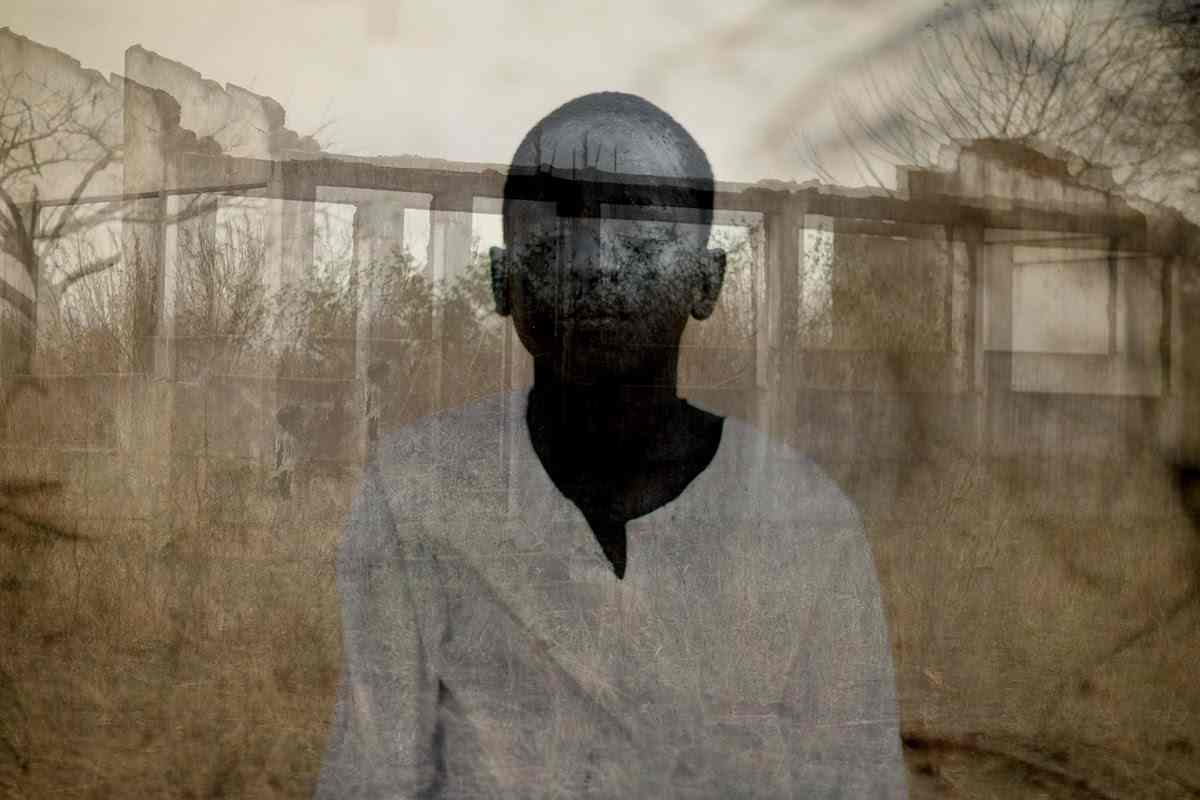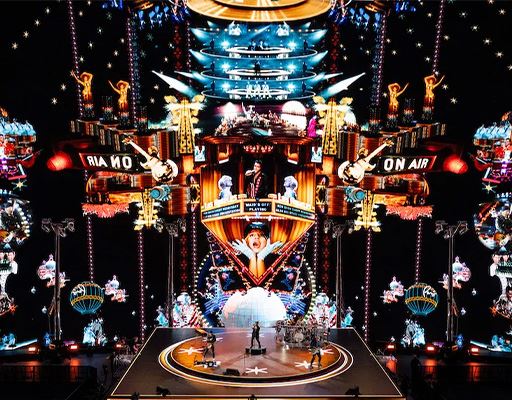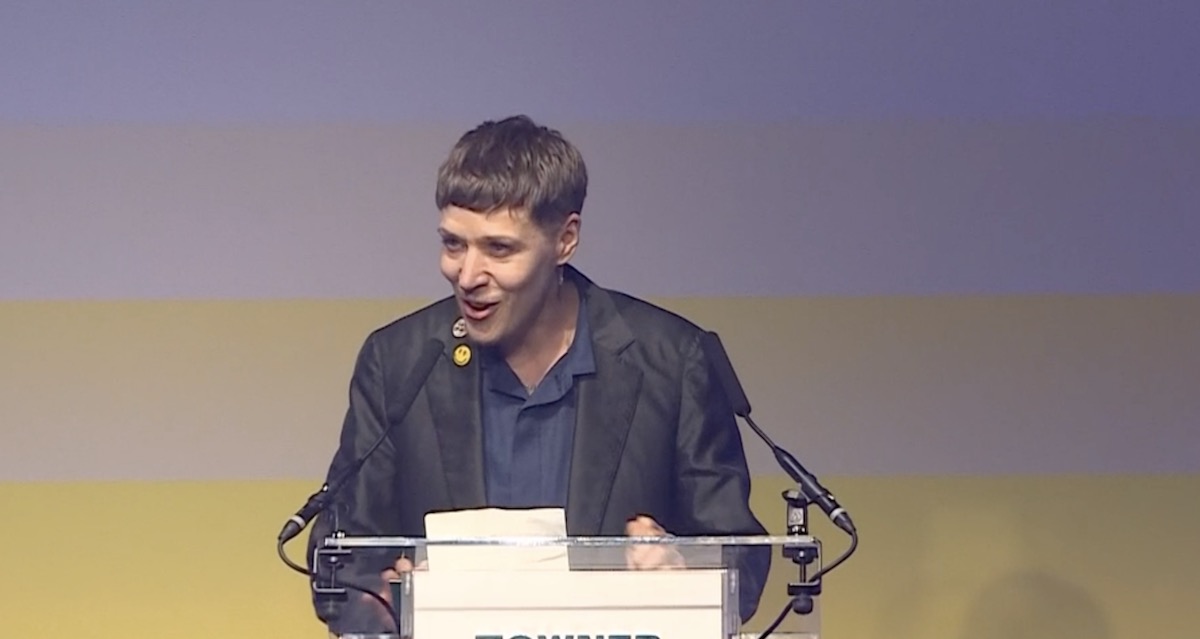Infinite Doors
2010 - Film & Video (Film & Video)
2:04 minutes
Takeshi Murata
If one had been guessing at Takeshi Murata’s criticism of American consumerist culture up until watching Infinite Doors , it would be solidified after hearing the announcer from The Price is Right squawk prizes one after the next. In the two minutes of the film’s runtime, can count the word “new” used twenty-eight times, and “car”—the holy grail of prizes on that show—used eight times. The bodacious women introduce free prizes, the doors slide open repeatedly, and the crowd cheers with an insatiable appetite in a clear signal of an American propensity for numbing overconsumption. (An unexpected moment of humor emerges when a Nazi enthusiast from the ending of Indiana Jones: Raiders of the Lost Ark melts on one of the new, free flat-screen TVs.) The artist talks about this work in relation to his experience as a “child of the ‘80s (mostly),” making him a prime target for that era’s commercial marketing on steroids. Murata says, “The ‘80s-era marketing is comical now, and easy to make look ridiculous. With Infinite Doors , I wanted to show my affinity for it, for better and worse, and understand how it shaped my aesthetic development. With the digital age, it’s harder to see the humor because it’s harder to see. It’s definitely heightened, or maybe honed is a better word. How else are Facebook and Google worth billions, right?”
Underlining the temporality of nostalgia, memory, and narratives crafted through cinematic pop culture, the American artist Takeshi Murata has constructed a body of animated works that explore the lifespan of moving images and their role in the shaping of shared cultural histories. Whether abstracting footage culled from 1980s blockbusters like Rambo into a vibrant slurry of sight and sound, or slowing down the introductory credit sequence of the 1970s sitcom Three’s Company to a cryptic melancholic pace, as well as reworking the melodramatic prize package revealing moments from the game show, The Price is Right , Murata employs a variety of animation processes to highlight the decay of media narratives. Utilizing these forms of cinema as material, Murata skillfully manipulates pop culture iconography, not for irony, celebration, or critique, but as a requiem for the mortality of the images of our time, a reminder of the impermanence of mass media and the fleeting lifespan of cultural significance.
Colors:
Other related works, blended automatically
» see more

© » KADIST
Takeshi Murata
2013Takeshi Murata developed an interest in space inspired by his architect parents...
Related works sharing similar palette
» see more

© » ARTS EQUATOR
The Body Remembers: Kitt Johnson on "Stigma" at M1 CONTACT Contemporary Dance Festival 2019 | ArtsEquator Thinking and Talking about Arts and Culture in Southeast Asia Articles "Stigma", photo by James Quah (left), Kitt Johnson, photo by Per Morten Abrahamsen (right) April 29, 2019 By Germaine Cheng (605 words, three-minute read) 2019 marks the 10th edition of the M1 CONTACT Contemporary Dance Festival , a humble endeavour by Kuik Swee Boon, artistic director of T...
Other works by: » Takeshi Murata
» see more

© » KADIST
Takeshi Murata
2013Takeshi Murata developed an interest in space inspired by his architect parents...
Related artist(s) to: Takeshi Murata » Charles Atlas, » Jon Rafman
» see more

© » KADIST
Jon Rafman
2018View of Harbor by Jon Rafman mines the latent cultural imaginary surrounding climate change and society’s collective death drive...
Related works found in the same semantic group
» see more

© » ART CENTRON
James Barnor Prize for African Photographers Goes to Mário Macilau - Artcentron Home » James Barnor Prize for African Photographers Goes to Mário Macilau ART Nov 3, 2023 Ξ Leave a comment James Barnor Prize for African Photographers Goes to Mário Macilau posted by ARTCENTRON Untitled , Circle of Memories series, 2020 by Mário Macilau, winner of the second edition of the James Barnor Prize The multidisciplinary artist and activist from Mozambique, Mário Macilau, is the winner of the James Barnor Prize...

© » SLASH PARIS
Mélanie Matranga — Éveillée — Centre d’art contemporain Passages — Exhibition — Slash Paris Login Newsletter Twitter Facebook Mélanie Matranga — Éveillée — Centre d’art contemporain Passages — Exhibition — Slash Paris English Français Home Events Artists Venues Magazine Videos Back Mélanie Matranga — Éveillée Exhibition Installation, sculpture, mixed media Closing Mélanie Matranga, Le Rêve de Federico, 2023 © Mélanie Matranga Mélanie Matranga Éveillée Ends in 5 days: September 29 → December 16, 2023 You enter the house, and on the left, you can plunge...





